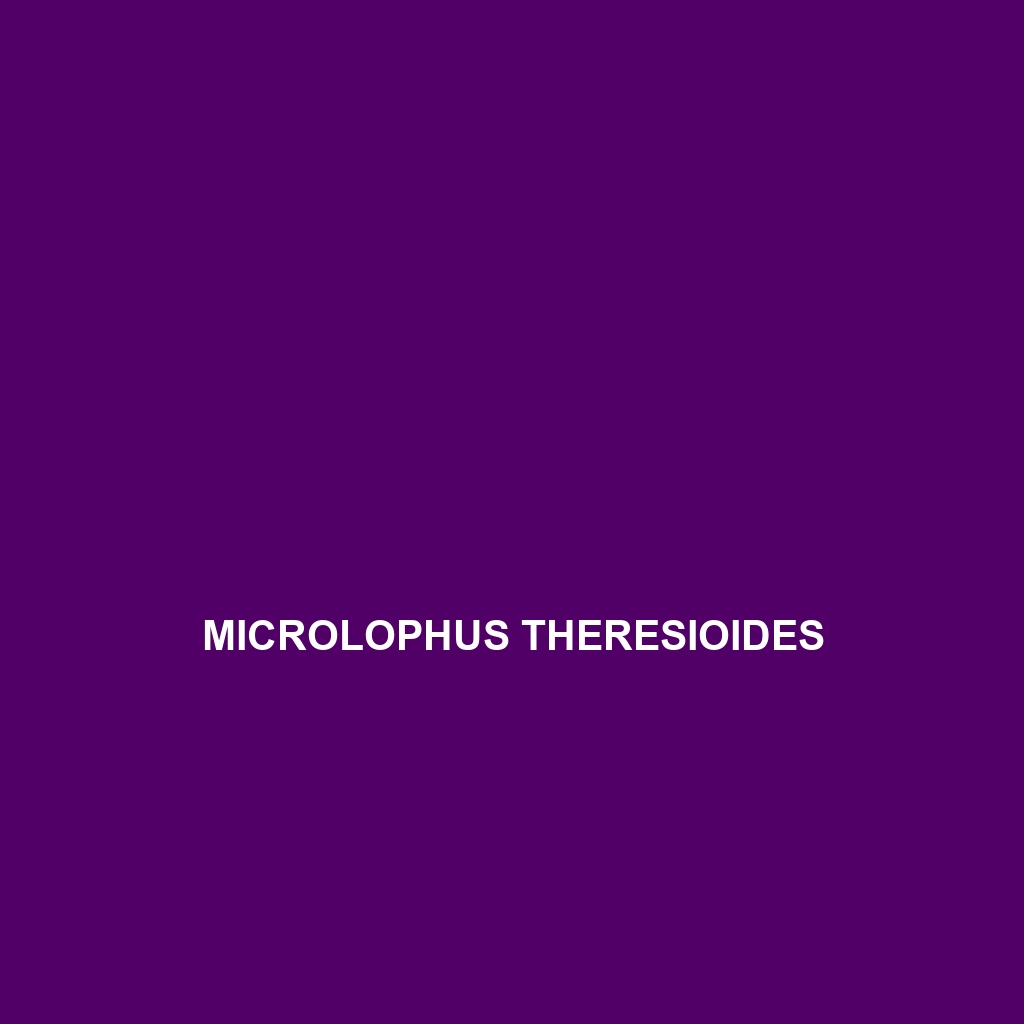Common Name
Microlophus theresioides
Scientific Name
Microlophus theresioides
Habitat
Microlophus theresioides, commonly referred to as the Galápagos Lava Lizard, is primarily found on the Galápagos Islands. This species thrives in a variety of habitats, including coastal regions, arid zones, and temperate forests. The Islands exhibit unique climatic conditions characterized by a subtropical climate, which includes both dry and wet seasons. The Galápagos Lava Lizard favors rocky terrains and areas rich in volcanic substrate, where they can easily hide from predators. As a result, this lizard is often spotted in locations where the environment provides both sun and shade, crucial for regulating their body temperature. Understanding their habitat preferences is essential, as they are intricately tied to the specific ecological qualities of the Galápagos archipelago.
Physical Characteristics
Microlophus theresioides displays distinct physical traits that set it apart from other lizard species. Typically, adults measure between 15 to 20 centimeters in length. They possess a robust body with a flattened head, which aids in thermoregulation as they bask in sunlight. One of the most striking features is their coloration, which varies significantly between different islands, with many displaying vibrant hues ranging from browns to greens mixed with striking patterns. Males exhibit brighter and more vivid colors compared to females, especially during the mating season, making them easier to identify. Their unique adaptations to the rocky environments make them proficient in camouflage, blending seamlessly with their surroundings.
Behavior
The behavior of Microlophus theresioides is fascinating and encompasses a range of activities, including basking, foraging, and social interactions. These lizards are diurnal, meaning they are primarily active during the day, often basking on rocks to absorb heat. Their social structure can be quite complex; males are territorial and engage in displays to ward off rivals, showcasing their vivid colors and performing push-up displays. During mating rituals, males also engage in head bobbing and tail waving to attract females. Observations have shown that these lizards have a nuanced understanding of their environment, reacting quickly to predators and threats.
Diet
Microlophus theresioides primarily feeds on a diet consisting of insects and other small invertebrates, classifying them as insectivores. They exhibit opportunistic feeding behaviors, consuming a wide range of available prey, including ants, beetles, and caterpillars. Occasionally, they may also ingest plant material, particularly during times of low insect availability, showcasing characteristics of an omnivore. Their hunting strategy involves foraging on rocks and vegetation, where they patiently ambush their prey, demonstrating excellent agility and speed. Understanding their dietary habits is crucial for assessing the health of their populations and the ecological balance of the environments they inhabit.
Reproduction
The reproductive cycle of Microlophus theresioides typically occurs during the warm months, aligning with the wetter season, which aids in offspring survival. Mating usually occurs in the late spring, with females laying clutches of 2 to 6 eggs in sandy substrate or under rocks. The gestation period lasts approximately 60 days, after which the hatchlings emerge fully independent. Parental care is absent; however, the eggs are laid in locations that provide some protection from predators. Understanding their reproductive habits can offer insights into population dynamics and the challenges posed by environmental changes.
Conservation Status
Currently, Microlophus theresioides is classified as Least Concern according to the International Union for Conservation of Nature (IUCN). However, their populations are vulnerable to habitat degradation, invasive species, and climate change. Conservation efforts in the Galápagos Islands focus on habitat protection and the management of invasive species, which pose significant threats to the native wildlife. Continuous monitoring is vital to ensure the populations thrive in their natural habitats amidst growing environmental challenges.
Interesting Facts
One intriguing fact about Microlophus theresioides is their remarkable ability to change color in response to environmental stimuli, which aids in camouflage and thermoregulation. Additionally, these lizards can drop their tails when threatened, a defensive strategy that allows them to escape predators. This lizard species also exhibits sexual dimorphism, an uncommon trait among many reptile species, where males and females showcase differing physical characteristics noticeably. Their unique adaptations provide vital insights into the evolutionary pressures present in the isolated ecosystems of the Galápagos Islands.
Role in Ecosystem
Microlophus theresioides plays a significant role in the ecosystem as both predator and prey. As insectivores, they help control insect populations, contributing to ecological balance and health. Additionally, they serve as a food source for larger predators, including birds and snakes, ensuring the flow of energy within the food web. Their interactions with the environment also facilitate seed dispersal and contribute to soil health, further underscoring their importance in maintaining ecological integrity. Promoting awareness of their ecological contributions can support conservation initiatives aimed at preserving the diverse life forms within Galápagos ecosystems.
